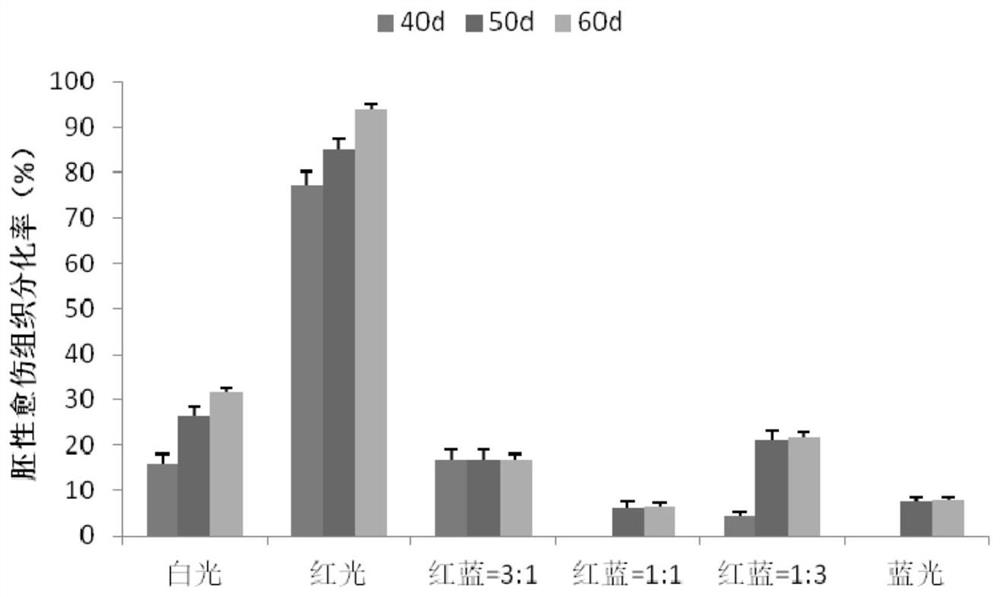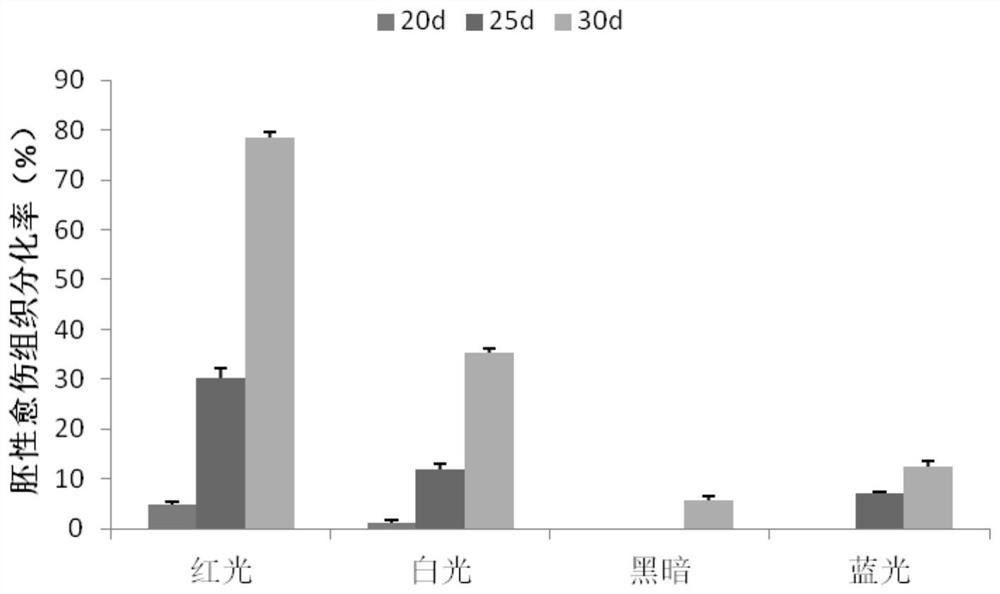Cultivation method of cotton embryogenic callus and embryoid body
A technology of embryogenic callus and culture method, which is applied in the field of biotechnology tissue culture, and can solve the problems of increasing the burden on the temperature control system
- Summary
- Abstract
- Description
- Claims
- Application Information
AI Technical Summary
Problems solved by technology
Method used
Image
Examples
Embodiment 1
[0028] Example 1. Light quality can regulate the differentiation of cotton embryogenic callus
[0029] Materials used: China Cotton Institute 24
[0030] 1. Preparation of explants
[0031] Choose the seed of cotton delinting, put it into 0.1% (mass percentage) HgCl 2 Soak in aqueous solution for 4 to 5 minutes to sterilize, then rinse with sterilized distilled water 5 times to completely remove residual HgCl 2 , to obtain sterilized seeds; the sterilized seeds are placed in sterile seedling medium (MS medium) to cultivate, to obtain cotton sterile seedlings;
[0032] 2. Differentiation of embryogenic callus
[0033] 1. Comparison with white light
[0034] Get the hypocotyls of the 7 days (starting to calculate from the seed insertion culture medium) that step one obtains aseptic cotton seedlings, cut it into 0.5cm long cutting sections, then insert the cutting sections obtained into No. 2 callus induction After submerged in the culture medium, connect 5-6 sections in eac...
Embodiment 2
[0055] Example 2, light quality can regulate the differentiation and seedling formation of cotton embryoid bodies
[0056] 1. Differentiation of embryoid bodies
[0057] Select the embryogenic callus with substantially the same texture obtained in Example 1 and place it in MSB medium (this medium is made up of solvent and solute, solvent is water, solute and its concentration are respectively IAA 0.025mg / L, KT 0.01mg / L, sucrose 30g / L, Gelrite 2g / L, pH 6.2, add 50mg to each culture medium, inoculate evenly with a distance of about 5-8mm; Two groups, each with three culture media, were then cultured under different light qualities, and the rest of the culture conditions were the same, with a temperature of 25±2°C and a humidity of 65%. The experiment was repeated three times. Subculture once every 20-25 days, generally Generation 2-3 times. Subculture conditions are: when the embryogenic callus presents bright yellow, granular (when the culture time is about 20-30 days), it ne...
PUM
 Login to View More
Login to View More Abstract
Description
Claims
Application Information
 Login to View More
Login to View More - R&D
- Intellectual Property
- Life Sciences
- Materials
- Tech Scout
- Unparalleled Data Quality
- Higher Quality Content
- 60% Fewer Hallucinations
Browse by: Latest US Patents, China's latest patents, Technical Efficacy Thesaurus, Application Domain, Technology Topic, Popular Technical Reports.
© 2025 PatSnap. All rights reserved.Legal|Privacy policy|Modern Slavery Act Transparency Statement|Sitemap|About US| Contact US: help@patsnap.com



